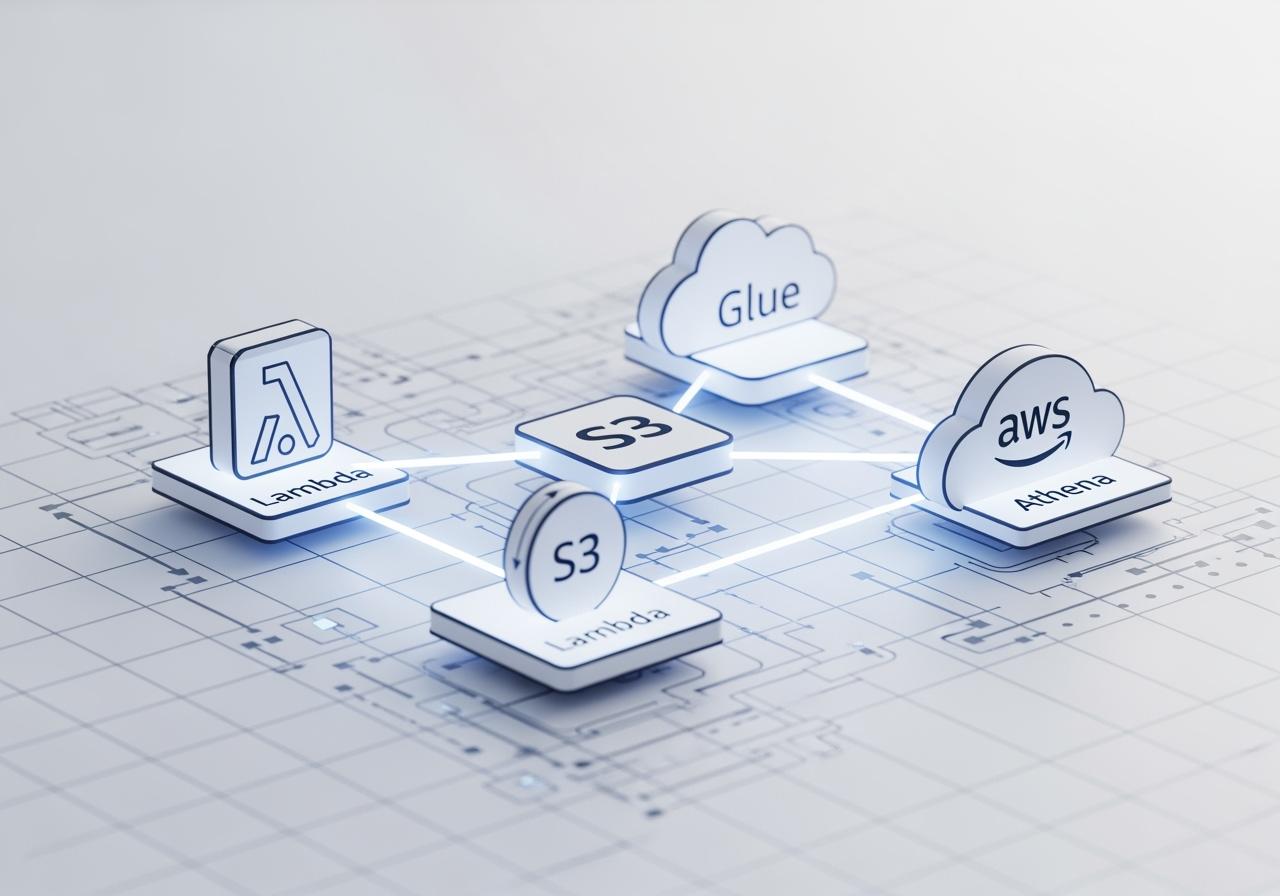Choosing Serverless for FinOps Scale
CoreFinOps was designed to scale elastically with customer demand while maintaining a lean cost profile. Traditional monolithic architectures would inflate idle costs and slow feature delivery. By embracing serverless-first principles-stateless compute, managed analytics, on-demand storage-the platform aligns its operational model with the FinOps values it promotes. Customers benefit from real-time insights without funding idle infrastructure.
Serverless also accelerates innovation. Teams deploy new automation workflows as Lambda functions, iterate rapidly, and rely on AWS to handle availability. The architecture treats FinOps capabilities as modular building blocks that can be composed and extended without refactoring a monolith.
API Gateway as the Control Plane Entry Point
Every user interaction begins at Amazon API Gateway, which enforces authentication, rate limiting, and routing. Multi-tenant headers determine which tenant context the request belongs to, while custom authorizers validate JWT tokens issued by CoreFinOps’ identity service. API Gateway integrates with AWS WAF and CloudFront for security and global edge performance. Because it is serverless, the control plane scales instantly during reporting peaks without provisioning load balancers.
The gateway routes requests to purpose-built Lambda functions: analytics queries, automation triggers, evidence retrieval. Each route maps to a domain bounded context, keeping code bases small and focused. Deployments leverage AWS SAM and CodePipeline for zero-downtime rollouts.
Lambda Orchestrates FinOps Intelligence
AWS Lambda functions handle the majority of CoreFinOps business logic. Event-driven processes-daily CUR ingestion, anomaly detection, ROI ledger updates-run as scheduled Lambdas orchestrated by EventBridge. When workflows require multi-step coordination, Step Functions sequences tasks with retry logic, branching, and human approval steps. This pattern keeps pipelines robust without custom queue management.
Lambdas are written in TypeScript and Python, packaged with the dependencies needed for data processing, and optimized with arm64 architecture to reduce cost. Provisioned concurrency is applied only to latency-sensitive endpoints, while the idle guard monitors metrics to scale down aggressively during quiet hours. The result is a compute layer that responds instantly yet costs pennies when idle.
S3 and Athena Power Elastic Analytics
CoreFinOps ingests AWS Cost and Usage Reports (CUR) and auxiliary telemetry into Amazon S3 buckets organized by tenant and data classification. Glue crawlers maintain schemas automatically, while partitioning strategies keep query performance snappy. Amazon Athena sits atop this data lake, enabling SQL-powered analytics without managing clusters. Dashboards, anomaly detectors, and ROI calculations rely on parameterized queries that Athena executes on demand.
To optimize spend, the platform leverages intelligent caching and materialized views. Frequently queried aggregations are stored in S3 as Parquet snapshots, refreshed by Lambdas when source data changes. This hybrid approach balances query freshness with cost efficiency, ensuring customers see timely insights without runaway Athena charges.
Idle Guard Logic Keeps Platform Costs Predictable
Practicing what it preaches, CoreFinOps enforces guardrails on its own infrastructure. Idle guard Lambdas monitor metrics like queue depth, concurrent executions, and data processing workloads. When activity dips, the guard reduces provisioned concurrency, pauses non-critical workflows, and shifts batch jobs to low-cost windows. CloudWatch alarms ensure critical services stay responsive. This discipline keeps platform operating expenses low, allowing CoreFinOps to pass savings on to customers.
Metrics feed into an internal ROI ledger mirroring what customers see. Leadership reviews cost per tenant, automation efficiency, and anomaly response times to maintain platform health. FinOps for FinOps is not just branding-it is a daily practice.
Multi-Tenant Isolation and Evidence Trails
Security and compliance demand strict tenant isolation. CoreFinOps enforces row-level security (RLS) in its analytics layers using tenant-aware views and encryption keys. Each API request carries tenant context, validated at every hop. Evidence artifacts-logs, manifests, approvals-are stored in tenant-specific S3 prefixes with KMS encryption. Access policies ensure that even internal support staff require just-in-time approvals to view customer data.
Audit trails capture every access and configuration change. Hash-based integrity checks guarantee that evidence bundles remain unaltered. This infrastructure gives customers confidence that their cost data is safe and compliant out of the box.
Extensibility Through Modular Services
Serverless architecture enables CoreFinOps to ship new capabilities rapidly. Each module-tagging compliance, commitments engine, anomaly response-operates as an independent service exposing APIs and event streams. Customers can integrate via webhooks, GraphQL APIs, or streaming pipelines. Feature toggles allow staged rollouts, and observability stitched together with CloudWatch, X-Ray, and OpenTelemetry ensures issues are diagnosed quickly.
As customer demand grows, the architecture scales horizontally. There is no lift-and-shift to a larger cluster-just more Lambdas spinning up on demand. The platform stays lean, resilient, and ready for the next FinOps challenge.
Wrapping up
CoreFinOps’ serverless foundation is not just a technical choice-it is a strategic alignment with FinOps values. By minimizing idle cost, automating operations, and keeping architecture modular, the platform delivers scalable insights without forcing customers to fund heavy infrastructure.
For organizations evaluating FinOps tooling, this deep dive shows how thoughtful architecture translates into reliable, cost-efficient outcomes. Serverless is the backbone that keeps CoreFinOps agile as cloud economics evolve.
